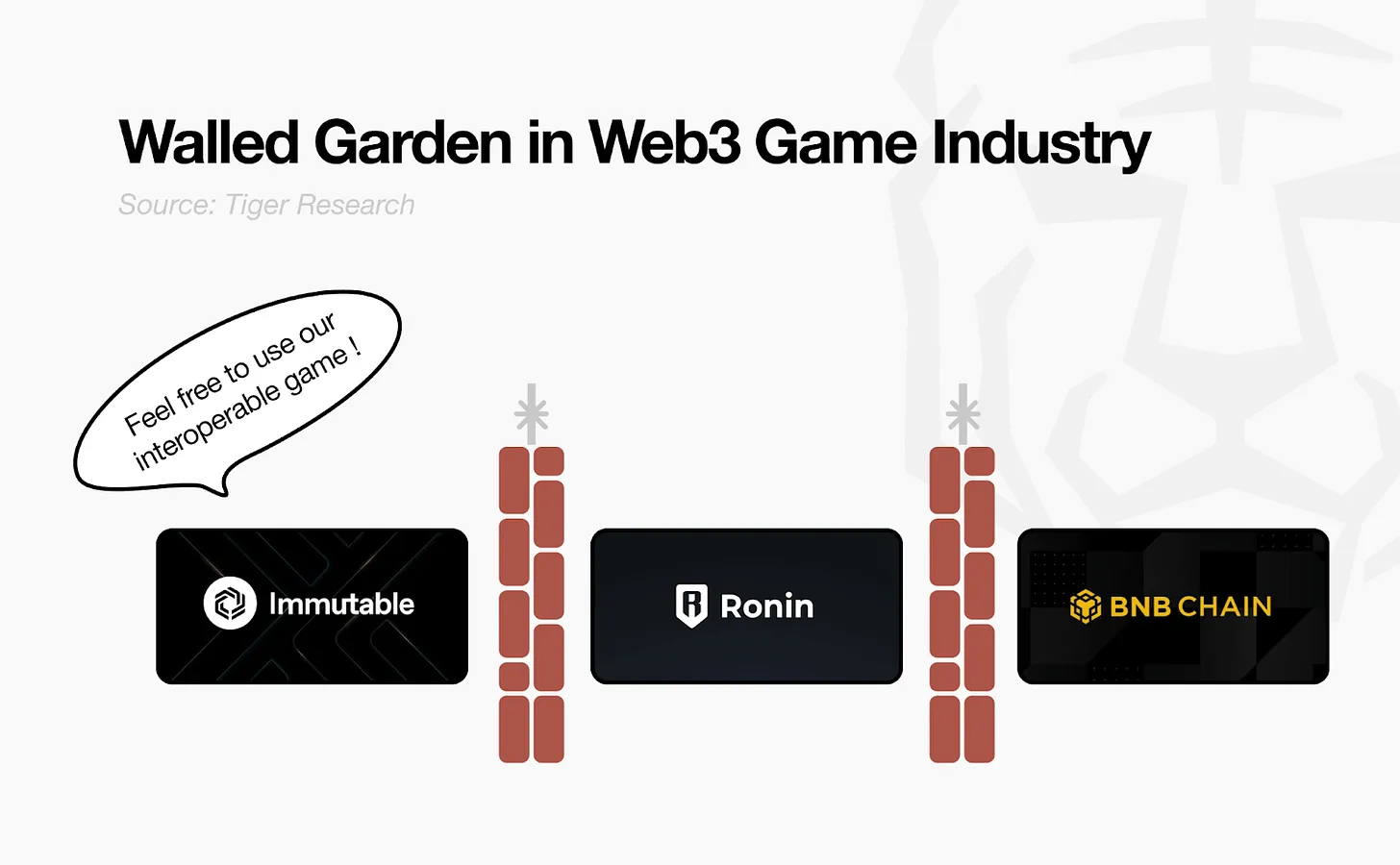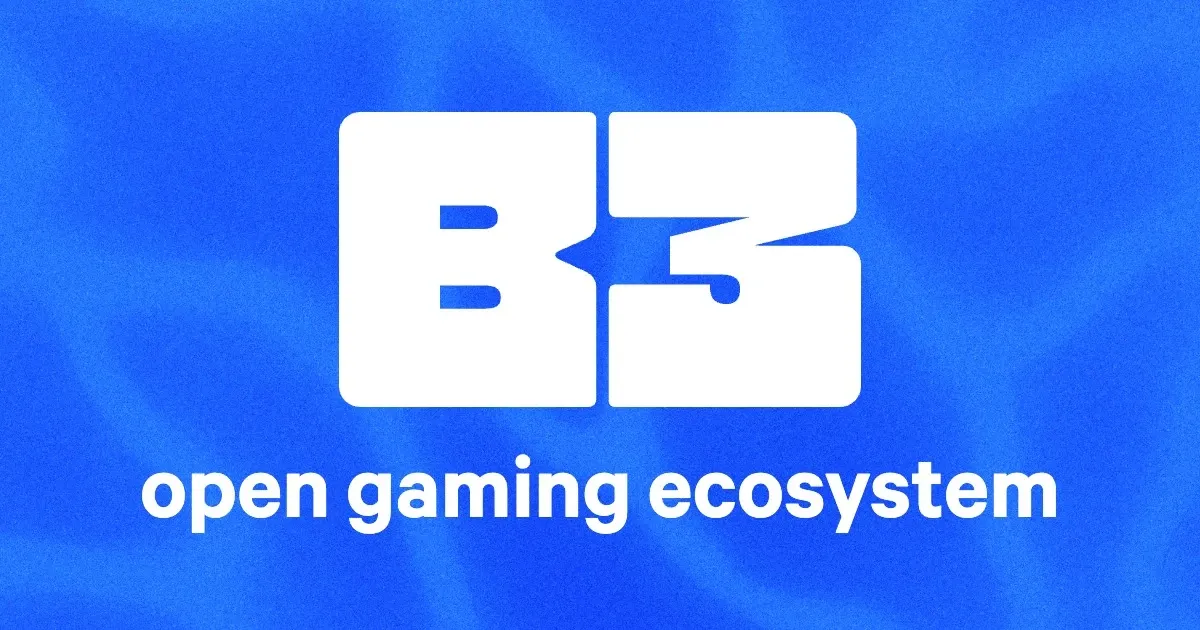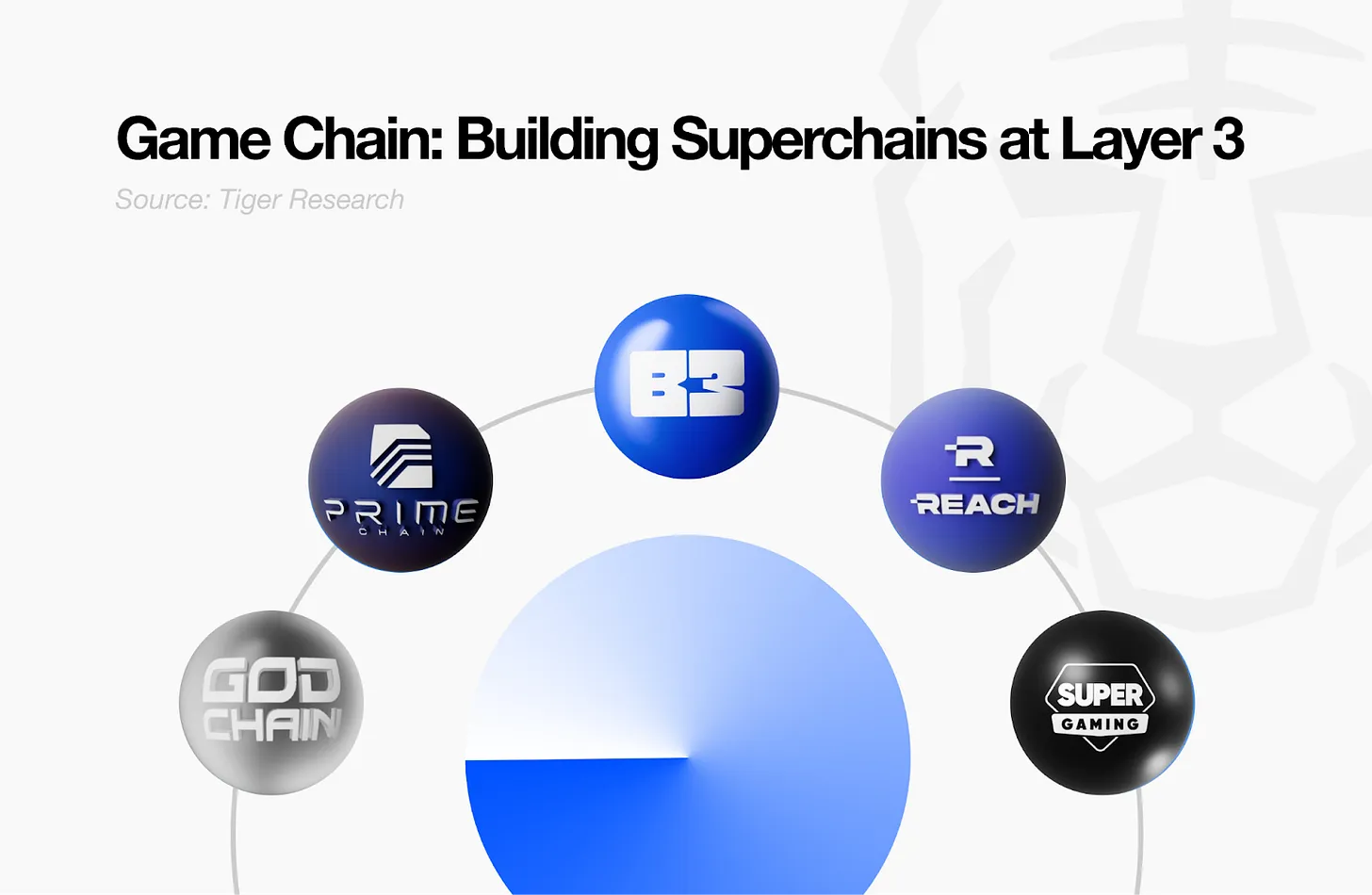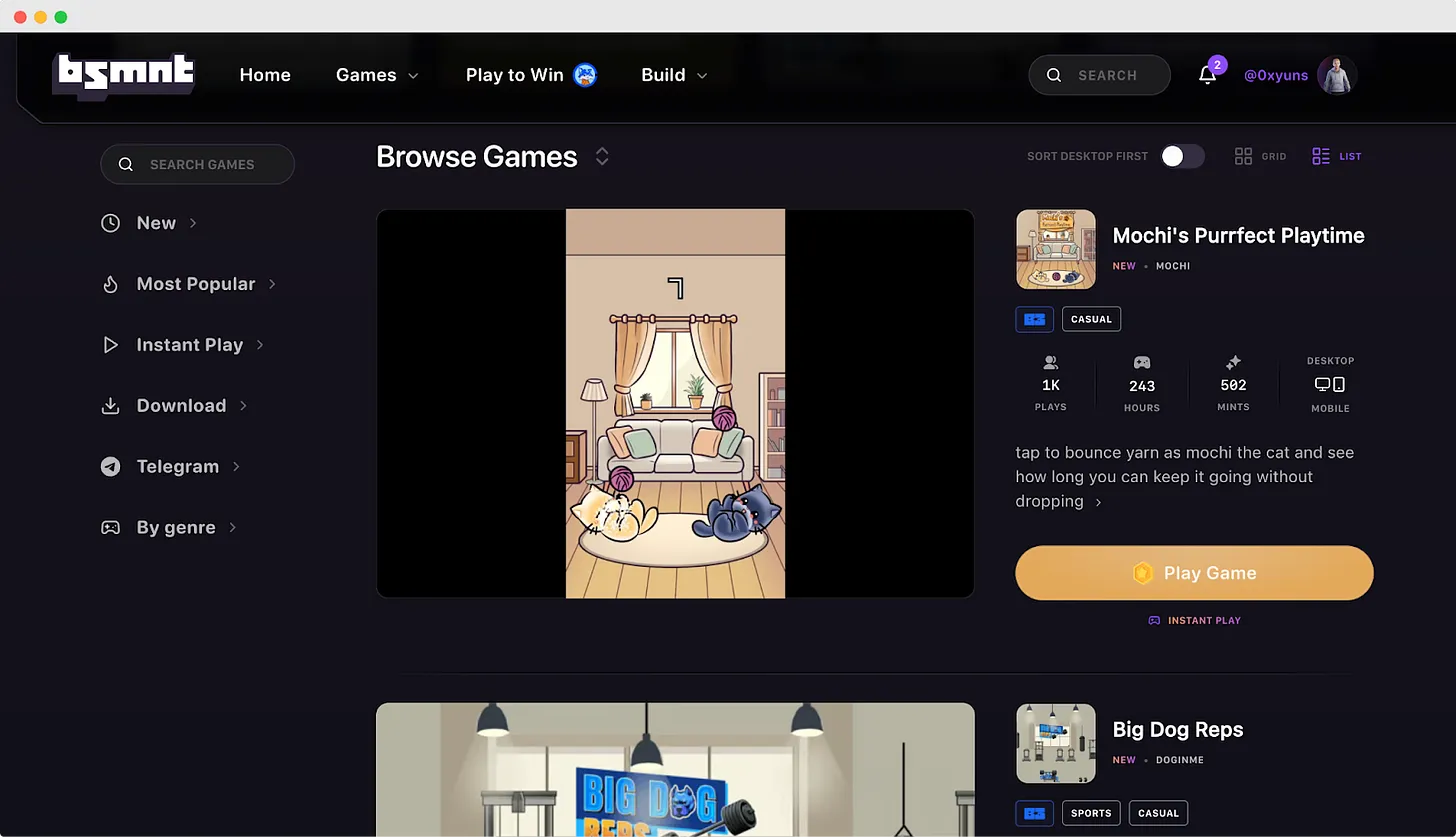This report is written by Tiger Research, analyzing how B3's vision for open gaming addresses the practical issues in the Web3 gaming industry and its potential for expansion into the mainstream gaming market.
Key Points Summary
- The Web3 gaming industry has stagnated after an initial speculative boom. Critics point out that the closed ecosystem structure is the fundamental problem.
- Former Coinbase employees and founding members of the Base chain created B3—a third-layer infrastructure optimized for gaming. The team developed high-performance, low-cost industry-customized infrastructure and built an open gaming ecosystem based on high interoperability to break through the structural limitations of the Web3 gaming industry.
- B3's vision is not limited to addressing the limitations of the Web3 gaming industry. They aim to provide a new paradigm for the traditional gaming industry through community-centered governance models, cooperative rather than competitive inter-game dynamics, and the development of an expanded virtual economy.
1. Crisis in the Web3 Gaming Industry: Speculation or Innovation?
Web3 gaming was initially seen as a growth engine for the gaming industry due to the new possibilities brought by blockchain integration. However, contrary to early expectations, public interest quickly cooled, and doubts about its "innovative" nature continued to fester.

Data confirms this shift. The search volume for GameFi-related terms on Google Trends has continued to decline after peaking, and the trading volume of major GameFi tokens remains low.
Nevertheless, many builders still firmly believe that Web3 gaming will revive. However, after the speculative wave receded, public trust is difficult to rebuild. While the cryptocurrency industry finds new growth points through institutional adoption, the Web3 gaming industry is still stagnating in search of breakthroughs.
Today, Web3 gaming stands at a critical crossroads: Will it become a true vehicle for innovation, or will it fall into the final chapter of a speculative bubble? To move forward, the industry must confront its limitations and formulate a clear breakthrough strategy.
2. Fundamental Limitations of Web3 Gaming: Walled Gardens
The core crisis of Web3 gaming stems from its closed ecosystem structure. Despite its selling points of openness and interoperability, the reality often falls short. Blockchain technology theoretically allows users to own game assets and transfer them freely across platforms—this is the core value proposition of the field.

However, the current Web3 gaming ecosystem presents a paradox: Most games operate on isolated blockchain infrastructures, forming "walled gardens." This fragmentation dilutes the already limited user base and restricts liquidity, limiting the industry's growth potential. Game companies compete in a zero-sum environment, fighting over the "existing pie" rather than collaborating to "expand the pie," a dynamic that hinders innovation and drags down overall development.
To break the deadlock, Web3 gaming must dismantle its closed structure and build an open and interoperable ecosystem. This requires a strategic shift from individual competition to collaborative growth, allowing developers, platforms, and communities to co-create value.
Some projects have begun to address this challenge. For example, the blockchain gaming infrastructure project B3, initiated by the creators of the Base chain, proposes an "open gaming" vision aimed at structurally solving interoperability issues and providing fundamental solutions to the fragmentation of the Web3 gaming ecosystem.
3. B3: Opening a New Era of Open Gaming Ecosystems
B3 is a blockchain gaming infrastructure project created by former Coinbase employees and founding members of the Base chain. While building the Base ecosystem, the team identified a key limitation: the existing blockchain infrastructure cannot support the high transaction volume demands of gaming applications, leading to the development of high-performance, low-cost solutions tailored for gaming.

Source: B3
B3's ambition goes beyond optimizing throughput. After the mainnet launch in August 2024, the team released the "Open Gaming Declaration," aimed at addressing the structural issues of Web3 gaming. The declaration advocates for maximum interoperability, making games no longer isolated islands but integral parts of an interconnected open ecosystem.
B3's technical direction and grand vision have attracted the attention of top investors. The project has raised approximately $21 million in seed funding from institutions such as Pantera Capital and Hashed. As of May 2025, the B3 chain has reached 6.9 million wallet addresses, with over 300 million transactions—establishing its leading position in the gaming infrastructure within the Base ecosystem.
3.1 Open Gaming Layer³: Gaming-Optimized Infrastructure
The Open Gaming Layer³ is the philosophical foundation and technical cornerstone of B3's vision, achieving two main goals through the concept of third-layer infrastructure:
First, to develop a high-performance Rollup infrastructure "B3 chain" that provides a gaming-optimized environment;
Second, to help gaming companies build horizontally scalable "Game Chains" based on the B3 chain, maintaining interoperability while achieving independence.
3.1.1 B3 Chain: High-Performance Rollup Infrastructure Built on Base Chain
The B3 chain provides infrastructure for game developers who do not require dedicated blockchains. Built on the Base chain, it inherits the security and flexibility of the EVM stack while achieving low-cost, high-performance transaction processing through an off-chain scaling solution based on Optimism.

This off-chain third-layer infrastructure is designed specifically to meet the needs of the gaming industry. While existing second-layer solutions improve general performance, they still face cost and throughput limitations when dealing with millions of concurrent gaming transactions. This challenge is akin to traffic peaks on a multi-lane highway—widening the lanes (first layer) helps, but congestion remains unavoidable.
The B3 chain addresses this bottleneck through a third-layer architecture designed for gaming. By providing dedicated channels for gaming transactions—similar to bus lanes on a congested highway (third layer)—it achieves both high throughput and cost efficiency.

As of July 2024, the cost per transaction on the B3 chain is only $0.001, significantly lower than Ethereum's first layer ($0.34), Base chain ($0.017), and even Solana ($0.004). This enables developers to operate chain games reliably and efficiently, eliminating cost friction.
3.1.2 Game Chains: Customized Infrastructure with Independence and Scalability
The B3 team provides internal toolkits and technical support for companies developing "Game Chains" based on the B3 chain. This model is similar to a network of independent hotels connected through a global booking system—game companies maintain autonomy while achieving seamless interoperability within the larger B3 ecosystem.

These Game Chains adopt a hub-and-spoke architecture: the Base chain serves as the central hub, while the B3 chain and various Game Chains act as spoke nodes. This structure allows each game to operate in an independent high-performance environment while maintaining cross-chain connectivity and shared infrastructure. B3 extends Optimism's "super chain" concept to the third layer, providing a scalable framework that allows assets and interactions to flow freely between chains without sacrificing sovereignty.
Developers can add functional chains on demand, similar to designing microservices. For example, a dedicated chain can be established for high-traffic NFT transactions, avoiding the "noisy neighbor problem" (where the load of one function affects the overall infrastructure performance).
Currently, four game studios are building Game Chains:
Prime Chain by Parallel Studio
God Chain by Infinigods
SuperGaming Chain by SuperGaming
Reach Chain by the founding team of MySpace
These chains form the early pillars of an interconnected open gaming ecosystem supported by B3 infrastructure.
3.2 Basement.fun: On-Chain Gaming Platform
Basement.fun is the first front-end client from the B3 team, providing a user-friendly entry point for chain games. This platform allows users to experience blockchain games without specialized Web3 knowledge and provides developers with easy tools for deploying and managing chain games.
3.2.1 User-Friendly Design: Seamless Onboarding Experience

Source: B3, Tiger Research
Users can register with just an email or phone number. The platform supports a global account model that integrates social logins, MetaMask and other EOA wallets, and Coinbase smart wallets. The guest mode allows for instant gameplay without login, significantly lowering the entry barrier.

Source: B3
To enhance usability, Basement.fun employs B3's self-developed account and chain abstraction technology, AnySpend. This feature allows users to access cross-chain assets instantly through a single login account—without bridging or exchanging—providing a smooth experience similar to Web2, making chain games accessible to mainstream users.

Source: B3, Tiger Research
In addition to gaming, Basement.fun also serves as a social hub to promote player interaction. Through the coexistence of competition and cooperation in "Play-to-Win" real-time tournaments, it supports an immersive experience, with all game processes and rewards recorded on-chain to ensure transparency.
3.2.2 Developer-Friendly Publishing Platform: Web-Based Game Launcher

Source: B3
Basement.fun also acts as a publishing platform, providing a web-based game launcher for easy deployment and management of chain games. Through this platform, developers can implement key blockchain features such as token gating (restricting access to specific token holders) and a task system based on on-chain activities.
Additionally, the platform offers operational tools such as game reviews, leaderboard management, and notification features, allowing developers to focus on game design and content creation rather than backend infrastructure.
4. Hypothesis: The Future of the Gaming Industry Opened by B3

Source: Tiger Research
B3's open gaming vision brings new possibilities not only for Web3 gaming but for the entire gaming industry. Although the traditional industry has developed for decades, it is still constrained by centralized decision-making and closed economic structures. B3 aims to break these limitations by building a more open, interoperable, and community-driven ecosystem, paving the way for innovation.
4.1 Hypothesis: Will Game Development Decision-Making Shift from Publishers to Communities?
In traditional gaming, large publishers control core decisions, limiting diversity in development and creativity. Studios often rely on commercially validated replicas or sequels rather than investing in new IPs—leading to stagnation in innovation.
B3 will provide an alternative model through tokenized community governance. Using B3 tokens, the community can directly vote on game projects, with selected works receiving funding for development.

Obsidian's Kickstarter countdown live stream, Source: Obsidian Entertainment
This model allows game development to more transparently reflect player interests rather than those of publishers. Successful cases like "Pillars of Eternity" gaining community support through Kickstarter, or "Stardew Valley" reviving the farming simulation genre outside commercial constraints, illustrate this. B3 aims to create a growth space for original player-driven creativity free from top-down market logic.
Ultimately, B3's open gaming vision transcends technical interoperability, introducing a more transparent and inclusive governance structure that empowers communities to shape development directions, injecting new vitality into the gaming industry.
4.2 Hypothesis: Will the Gaming Industry Shift from Competition to Collaboration?
The traditional gaming industry suffers from structural inefficiencies—most notably, the isolation of user data. This fragmentation makes precise targeting and cross-platform marketing difficult. Coupled with rising user acquisition costs and declining marketing efficiency, companies face severe challenges.
In contrast, B3 introduces a Global State system that aligns with the open gaming vision, allowing user data, achievements, and reviews to be recorded and shared across all game chains. This shared infrastructure supports more precise and effective marketing.

Source: B3
B3 proposes various collaborative models based on high interoperability. The "Shared Incentives" model encourages games to expand their user base through cooperation, replacing exclusive user competition. For example, if a user from Game A purchases an item in Game B, Game A will receive a portion of the revenue as a referral reward.
The "Shared Liquidity" model bridges game tokens through B3 tokens or other underlying assets, allowing for the free flow of game tokens. This enables games to focus on content development and ecosystem collaboration rather than fragmenting resources in liquidity competition. These models directly address the volatility and inefficiencies of the Web3 market. Earlier this year, the liquidity of project tokens related to Trump and Melania experienced severe fluctuations, exposing the existing system's vulnerabilities and the short-term speculative nature of projects.
B3's collaborative ecosystem structure points to a sustainable long-term development path for Web3 gaming—moving beyond competitive fragmentation towards shared value creation.
4.3 Hypothesis: Will the Boundaries Between Gaming and Finance Blur?

Linden Dollar transactions in "Second Life," Source: Second Life
The gaming industry has long connected virtual and real economies. For instance, Roblox creators monetize game content, and the Linden Dollar economy built in "Second Life" rivals the GDP of small countries.
However, these economic systems operate in closed environments. Platforms and publishers charge high fees, restricting users to specific ecosystems to create and capture value. This centralized platform structure hinders users from fully realizing their economic potential.
B3 addresses these issues by constructing an open and extensible economic ecosystem with high interoperability. In the B3 ecosystem, various game chains support the seamless use of digital assets across gaming environments. The shared token accumulation model allows players to acquire premium items or special tasks across games using B3 tokens, creating a value cycle that transcends game boundaries. This effect is akin to economic activities expanding from domestic markets to global trade, enhancing market scale and liquidity.
This structure extends user economic activities from individual games to the entire B3 ecosystem, empowering users to truly own and manage the value they create. B3 will tighten the connection between virtual assets and the real economy, establishing gaming as a legitimate economic activity that transcends entertainment. Its infrastructure will further refine and popularize models like Axie Infinity scholarships.
5. Conclusion
The Web3 gaming industry is undergoing a transformation similar to the early 2000s internet bubble. Initial hype and speculative interest have given way to stagnation, raising fundamental questions about sustainability and exposing unexpected challenges. Such cycles are a necessary phase in the maturation of disruptive technologies. The industry must now focus on accurate self-assessment, solving real problems, and transforming innovative value.
In this context, B3's "open gaming vision" is significant. They not only create new games but also clearly diagnose the structural issues of the Web3 gaming industry and provide concrete solutions. While emphasizing the philosophical interoperability of technology, they build an open and collaborative ecosystem. B3 brings together core members who pushed the Base chain to the forefront of the second-layer market, with a team comprising experts in DeFi, governance, gaming infrastructure, social platforms, and NFTs, possessing both technical infrastructure capabilities and experimental model implementation experience.
In summary, B3's open gaming vision is expected to address the practical issues of the Web3 gaming industry and contribute the diversity and creativity lacking in traditional gaming. If their vision succeeds, Web3 gaming will break through the niche market of cryptocurrency enthusiasts and gain a genuine competitive advantage in attracting mainstream players. These changes may have a profound impact on the broader gaming industry in the long term.
免责声明:本文章仅代表作者个人观点,不代表本平台的立场和观点。本文章仅供信息分享,不构成对任何人的任何投资建议。用户与作者之间的任何争议,与本平台无关。如网页中刊载的文章或图片涉及侵权,请提供相关的权利证明和身份证明发送邮件到support@aicoin.com,本平台相关工作人员将会进行核查。




